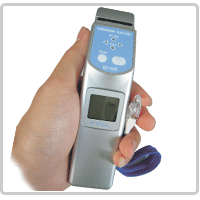A fiber interferometer is an optical device created to make use of light's wave-like properties for accurate measurements. It works by combining two or more light waves to produce a resultant wave that carries data about their relative phases. This process is known as the interference principle.
Important
Elements and Operating Principles
The optical fibers at the center of a fiber interferometer transmit light across great distances with little loss. The fundamental arrangement is utilizing a beam splitter to divide a single light beam into two directions. Before coming back together at a detector, these pathways pass via several fiber arms. An interference pattern, often known as a pattern of alternately light and dark fringes, is produced by the interference between the two beams. The Fiber Interferometer can detect even the smallest changes in the physical values being measured by analyzing variations in this pattern. You can buy visual fault locator online.
Applications in a
Wide Range of Fields
- Metrology and Accurate Measuring: In metrology labs and the industrial sector, fiber
interferometers are widely used for accurate length measuring, surface
profiling, and alignment. They are essential instruments for quality
assurance and calibration procedures because of their excellent precision
and stability.
- Environmental Sensing: To identify minute variations in temperature, pressure, and
refractive index, these instruments are used in environmental monitoring
systems. They help us comprehend the dynamics of the oceans, the
atmosphere, and the geological processes on Earth.
- Characterization of Materials: Researchers use Fiber Interferometers to examine the
mechanical and thermal characteristics of materials, assisting in the
development of innovative materials for the electronics, aerospace, and
automotive sectors.
- Detection of Gravitational Waves: In the field of astrophysics, Fiber Interferometers are a vital component of complex systems, which made significant gravitational wave discoveries that supported Einstein's general theory of relativity and opened up new research directions.
Outlooks for the
Future
Fiber interferometers and fiber identifier have a remarkably bright future. More sensitive and compact interferometers are being created as a result of developments in nanotechnology and materials science. They are being improved to increase their performance and reliability for a wider variety of applications. Fiber Interferometers may play a crucial role in quantum computing, secure communication, and other cutting-edge industries as technology advances.











